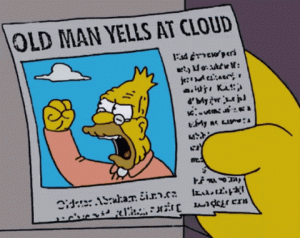
HBO and Max’s latest original series, The Sympathizer, has been a critical success since premiering this April, blending dark comedy with historical drama and life-or-death stakes. Like its 2015 source material, by author Viet Thanh Nguyen, the main story begins in 1975, framed against the backdrop of the fall of Saigon, the historical capital of South Vietnam. This real-life event not only opens The Sympathizer, but its fallout and the shadow of the Vietnam has far-reaching consequences for the rest of the series and its main characters.
With this in mind, a refresher on the real-world history behind the Vietnam War, both during and after the formal withdrawal of American forces in the conflict, is well-worth the time to read to better familiarize oneself with the actual context behind the story. Keep in mind, this isn’t intended to be an authoritative academic source on explaining the history of the Vietnam War but simply to help viewers of The Sympathizer better appreciate the history and context of the HBO series’ story and the importance of the Vietnam War that informs it so heavily.
The United States and Vietnam
As the Cold War intensified following the conclusion of World War II, the United Nations took a hardline stance on preventing the spread of communism around the world to mitigate the influence of the Soviet Union and China. This policy faced its first major test in the early 1950s, with America leading a United Nations coalition to repel a North Korean and Chinese invasion of South Korea in what quickly became known as the Korean War, concluding in 1953. During the Korean War, the French colonial forces in Vietnam were routed by Chinese-backed Indochina independence forces, culminating in a French withdrawal from Southeast Asia and recognition of national sovereignty for Vietnam, Cambodia, and Laos in 1954.
Subsequent peaceful attempts for a unified Vietnam were derailed by America backing the pro-western South Vietnamese government and China continuing its support of the communist leader Ho Chi Minh in North Vietnam. As a war broke out between the two Vietnamese governments following a heavily contested election manipulated by outside influence in 1955, the Eisenhower Administration was initially reluctant to commit to a direct military conflict so soon after the conclusion of the Korean War. Eisenhower sent several hundred American military personnel to South Vietnam to serve in an advisory and support capacity prior to being succeeded by John F. Kennedy in 1961.
The Kennedy Administration significantly increased the American military presence in South Vietnam in the face of the country falling to an increasingly formidable North Vietnamese military. Shortly after the Kennedy Administration tacitly supported a coup of the South Vietnamese government, Kennedy himself was assassinated in 1963 and replaced by Lyndon B. Johnson. The Johnson Administration committed to directly pitting American forces against the North Vietnamese, expanding the conflict to the neighboring Laos by 1964 and launching full-scale offensives throughout the region.
In The Sympathizer, the unnamed protagonist, known simply as the Captain, is a double agent working as the aide-de-camp for a South Vietnamese general while secretly loyal to the North Vietnamese government. Reflecting the conflict’s origins, the Captain is of biracial heritage, with his father French Caucasian and his mother full-blooded Vietnamese. This leads him to enduring bullying from his peers growing up, seen in flashbacks to his childhood throughout the series.
Nixon’s Vietnamization
By the end of the Johnson Administration’s escalation of U.S. involvement in the Vietnam War, public support in America and overall morale was shaken by the Tet Offensive, an ambitious series of attacks carried out by the North Vietnamese throughout 1968. With polled approval of his administration and its agenda in Vietnam plummeting, Johnson opts not to run for reelection and is replaced by Richard Nixon as the next President of the United States. Nixon runs on a platform including a then-unspecified plan to end the Vietnam War, which he dubs “Vietnamization” after his election.
This new strategy had the American military gradually reduce its presence in Vietnam, turning over the primary combat operations to the South Vietnamese while continuing to provide support, including funding, vehicles, and weaponry. The United States officially ended its direct involvement in Vietnam with the departure of the last combat troops in 1973, though some of the war’s bitterest fighting and expansion into Cambodia would take place during the Nixon Administration. While armed with American weapons and combat vehicles, the South Vietnamese found themselves in a losing war against their northern counterparts, progressively losing ground to North Vietnam upon the United States’ exit
The Fall of Saigon
Even after the Vietnam War formally ended for the United States in 1973, the Nixon and subsequent Ford Administrations maintained a presence in South Vietnam. This ended with the fall of Saigon in April 1975, following months of the South Vietnamese losing ground to an ambitious North Vietnamese campaign that left Saigon the last bastion of the South Vietnamese government. The CIA and American military organized Operation Frequent Wind, a mass evacuation of Saigon through various aircraft, focusing on American personnel, allies, and those at risk of persecution from the incoming North Vietnamese government as defeat became clear and inevitable.
The largest helicopter evacuation in history, Operation Frequent Wind launched on April 29, 1975 and concluded in the early hours of April 30, with the last American helicopters leaving the U.S. embassy in Saigon that morning. Within hours afterwards, the North Vietnamese military seized control of Saigon, with Ho Chi Minh himself declaring victory over the city’s radio that afternoon. In July 1976, Vietnam was formally unified as single sovereign country under a communist government while Saigon was renamed Ho Chi Minh City.
The Sympathizer begins in the midst of Operation Frequent Wind and the impending fall of Saigon, as the Captain plans to flee South Vietnam for the United States with his general. One of Robert Downey, Jr.’s characters in the series is Claude, a CIA operative overseeing Operation Frequent Wind and facilitating the Captain and general’s escape from the country. At the end of the opening episode, the Captain and general manage to flee on an American military plane that takes off as the North Vietnamese troops overtake Saigon.
The Shadow of the Vietnam War
The impact of the Vietnam War would be felt on multiple levels throughout Southeast Asia and the United States for decades to follow the cessation of hostilities and reunification of Vietnam. The Sympathizer unfolds throughout the immediate aftermath of the Vietnam War, predominantly focused on the South Vietnamese refugees that relocated to the United States as the Captain continues to spy on his general and the community around him. Back in Vietnam, the framing device for the series is the Captain detained in a reeducation program over his divided loyalties, something that was inflicted on thousands of South Vietnamese following the war.
For America, the divided public sentiment over its direct involvement and inability to defeat the North Vietnamese would negatively affect the collective conscience and confidence of the country for much of the following decade. The Sympathizer explores this through the lens of Downey’s other characters as the Captain becomes involved with a Hollywood production intending to depict the American experience in the Vietnam War. This is something of an allegory for Francis Ford Coppola’s sprawling Vietnam epic Apocalypse Now and the chaotic production behind it.
As The Sympathizer continues, more historical events throughout the immediate aftermath of the Vietnam War on both sides of the Pacific Ocean will be explored, further grounding the story in a historical context that affected the lives of millions in its picaresque odyssey through the eyes of a Vietnamese double agent.
The Sympathizer is available to stream on Max, with new episodes premiering Sundays on HBO.
The post The Sympathizer: What to Know About the Vietnam War and the Fall of Saigon appeared first on Den of Geek.








